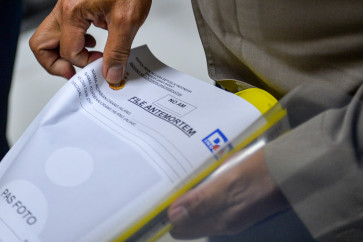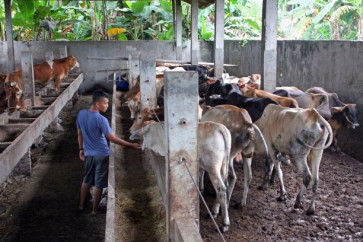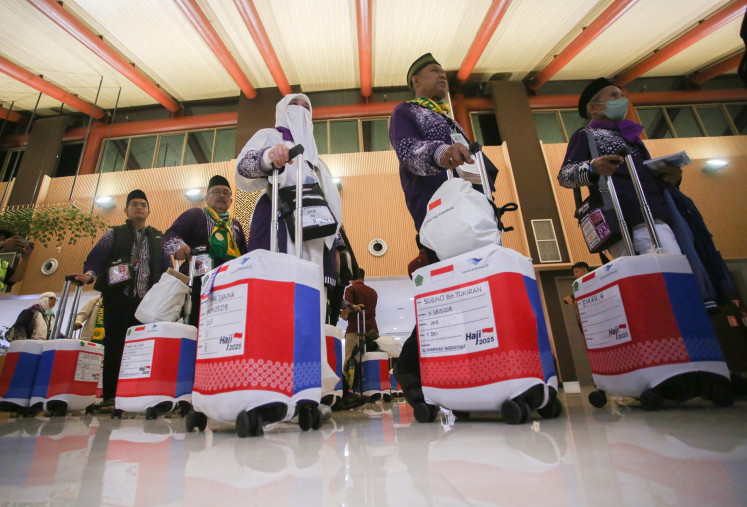The lowest common denominator is too high too often
Asked to wear different hats at different times, the shifts in perspective from marketer, media agency and creative agency make the simple conclusion obvious
Change text size
Gift Premium Articles
to Anyone

Asked to wear different hats at different times, the shifts in perspective from marketer, media agency and creative agency make the simple conclusion obvious.
It is vitally important to get your facts right. Then, your marketing strategy right. Then, to keep your finger on the pulse of the consumer, consistently. The critical need is to understand the consumer, really understand, without paying lip service to that process.
What sense can it possibly make to limit consumer knowledge to the top 15 cities that don't even add up to 20 percent of your consumer base today? Then compound that paradox by ignoring the fact that growth in the future will come from outside those cities, as economic growth filters down to Indonesia's towns and villages? If that sounds ridiculous, remember that truth is often stranger than fiction.
That truth is that consumer knowledge for too many marketers is gathered only from the cities, refined in the cities, with marketing efforts too deeply influenced by those same cities. Often, 70 to 80 percent of the brand's consumers remain unknown and ignored. The evidence lies in the baseline data gathered from the cities, then tracking surveys and focus groups administered, only in these few cities.
Media and lifestyle data for these marketers and their agencies are also restricted to this very limited universe of consumers. The convenient excuse trotted out in defence of this inexplicable behavior is the erroneous assumption that the city-dweller spends more.
There is too much evidence to the contrary that would shatter this myth. The exceptions of course are the small number of affluents who buy new cars, credit cards, overseas holidays and other such high-end products.
For the vast majority of marketers involved in mass marketing products and services, that convenient excuse is simply unavailable. Whether it is sauces and seasonings, toothpaste or shampoo, mobile phones or motorcycles, the overwhelming number of today's consumers and tomorrow's prospects live outside of the top 20 cities. The average rural subscriber is already spending as much on his cellular connection as his urban counterpart, both city and town. As for future growth, the overwhelming number of prospective consumers hail from outside the top 20 cities.
This is true not just for new entrants wanting to enter the cellular world for the first time, or the millions planning to buy a new motorcycle, or open a bank account, but also the ever-growing number of housewives aspiring to use that more "premium" brand of cooking oil, that "luxury" brand of shampoo.
In contrast, here we are, with too many marketers not recognizing the difference between city, town and village. They are the same armchair marketers who make national decisions based on city-centric knowledge. That is akin to looking for gold in a coal mine, just because the hole in the ground already exists. Moving on from the basic to the more sophisticated, there are those missing layers of consumer knowledge from around this large country that could make the difference between firing a shotgun instead of a sniper's rifle to hit the target.
That "shotgun" is the expensive business of multi-billion rupiah campaigns aimed at the entire country, designed with knowledge gathered from a dozen cities. The irony is that less than a billion rupiah spent on consumer knowledge could easily prevent hundreds of billions being wasted on misguided marketing efforts. Shareholder funds, after all.
Take for example the current universe of 7 million people intending to buy a new motorcycle in the next four years. Not only are the needs of the city, town and village residents different in the three distinct geographies, the wants of these millions of prospective buyers vary significantly.
To make the marketing challenge more complex, there is then the remarkable difference in views expressed by those intending to buy a Honda, a Yamaha or a Suzuki. The ability to meet those different needs and wants are not only influenced by the products available, not only the geography of the intenders, but also the ability to fine-tune the communications at the national and local levels. To do that, knowing the critical differences in views as expressed by the different consumers, in the different geographies, is the first step towards getting the marketing programs right.
These conclusions are based on Roy Morgan Single Source, a syndicated survey with over 25,000 Indonesians 14 years and older interviewed each year. That national database is updated every quarter, acting as a tracker of sharply defined targets, reflecting changes as they occur. Almost 90 percent of the population is covered, from the cities, towns and villages. That is just one of the many reasons why the survey is used by more marketers and media agencies than any other.
Paying lip service to the consumer can be lethal. A dipstick study in the wrong place with a handful of people, or an occasional peek at a few towns or villages to silence the critics, is best left unread. Anybody who watches the national marketplace over time would know that a spike or a dip in the price of everyday essentials, triggered by global or local factors, has an immediate impact on consumer behaviour.
The ability to respond quickly, with the communications tweaked if not the product, can make all the difference.
The writer can be contacted at Debnath.Guharoy@roymorgan.com









